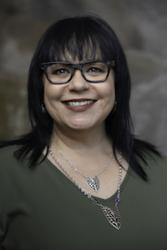How We Serve Our Indigenous Students

Dr. Traci Morris
Director, AIPI
As the school year comes to a close and we all begin another month in some stage of quarantine, it is hard to believe how much our world has changed. And yet, some things haven’t changed; rather long-standing disparities are only just now coming to the forefront of public attention. The unfortunately vast gulf in internet access between indigenous people and the rest of the United States has been opened up for all to see as Native nations are hit harder than other populations by the virus and the economics of the situation. One of the topics that we at AIPI have been researching for years (and myself for years before that) is the digital divide. It became very apparent just how disconnected Indian Country is when students at the university had to return home during late March. Given our area of expertise, AIPI has been working to elevate the visibility of the divide with the support of the highest levels of leadership at ASU, including President Crow.
We prepared a series of briefs about the digital divide and its impact on Indian Country in early April 2020. Although they can and do easily stand alone, we see them as companion pieces to one another. The first—COVID-19: The Impact of Limited Internet Access and Issues with Social Distancing for Native Students—explained the additional barriers to educational achievement that Indigenous students face as schools transitioned to online-only formats, especially considering that they are already documented as disproportionately impacted by the digital divide. The second—Tribal Digital Divide Policy Brief and Recommendations—includes talking points on the divide and recommendations to address internet access on rural and tribal lands. The latter was developed at the request of ASU tribal leadership for use by ASU President Crow in supporting Native students and for use in talking with Arizona elected officials.
I believe I can speak for all of us at AIPI in saying we have been inspired by our colleagues at ASU, who have stepped up to serve our Native students and made sure that none were left behind in this transition to online education. I know that every one of our 3,000-plus students was called more than once to make sure they were OK. I know that some students were given scholarships to keep up with bills as they lost jobs and gift cards for food as they ran out of other support. I know that students in need were given hotspots and laptops to keep up with classes on a case-by-case basis. This is what we do at ASU; we serve.